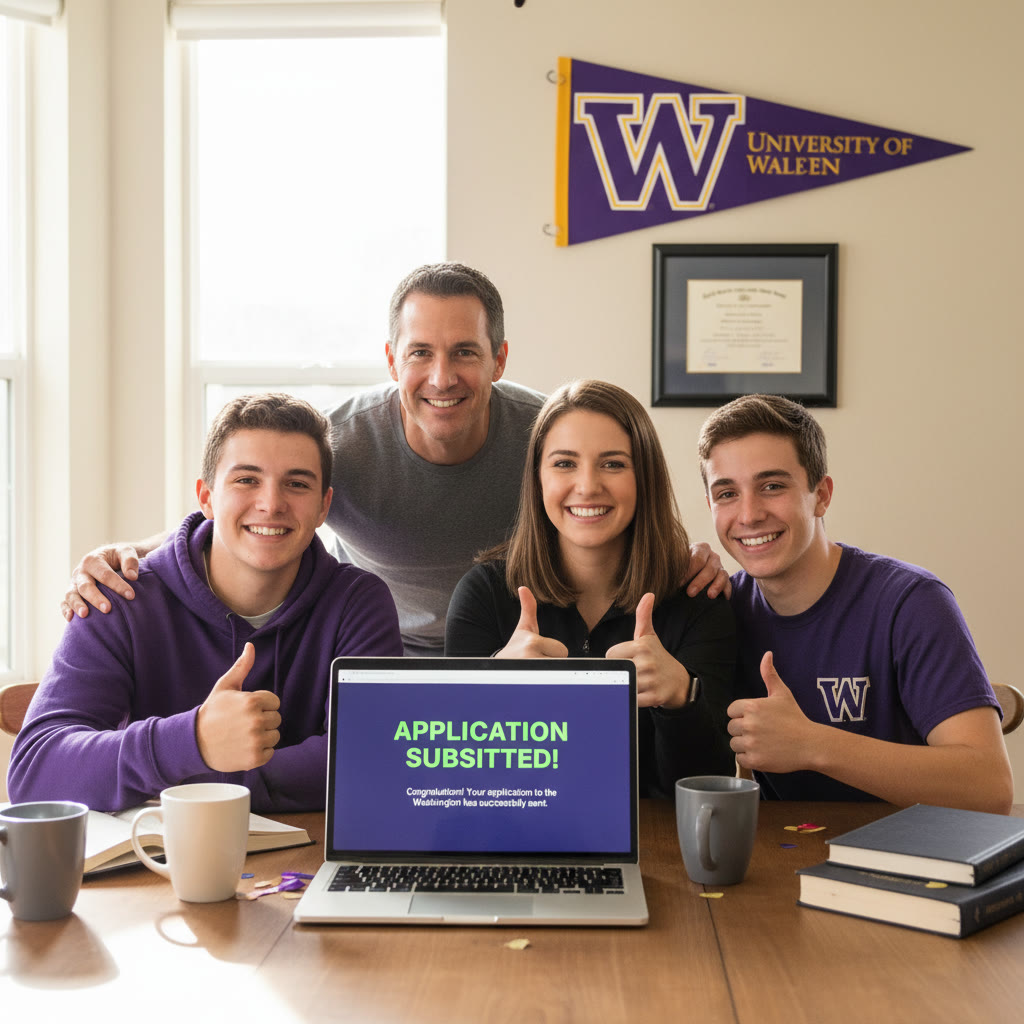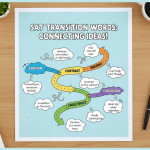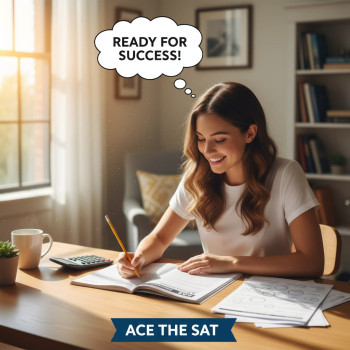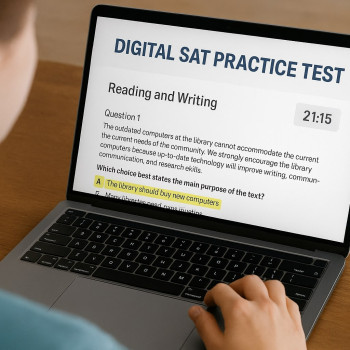Introduction: Why this matters right now
If you or your student is aiming for the University of Washington (UW), you’re probably juggling transcript checks, activity lists, essays, recommendation letters — and the lingering question: do I need the SAT? The answer affects how you spend your study hours, where to focus your energy, and sometimes even whether to pursue scholarships that consider test scores. This guide walks through the current testing landscape for UW, helps you make a smart decision about submitting SAT results, and gives practical preparation and application strategies that fit the Digital SAT era.

Quick answer: Does University of Washington require the SAT?
University of Washington’s admissions stance is best understood as flexible: it operates with a test-optional approach. That means applicants are not required to submit SAT scores, but they may choose to submit them if they believe the scores strengthen their application. Because policies evolve, always confirm the policy in the year you apply — but for most applicants, the key is this: you can apply without SAT scores, yet submitting strong scores can sometimes help your candidacy.
What “test-optional” really means for you
Test-optional is not the same as test-blind. If a school is test-optional (like UW is), admissions officers can consider SAT or ACT scores when they are included. If you have scores that reflect your best academic abilities and complement your GPA and coursework, sending them can be an advantage. If your scores don’t represent your strongest work, you can omit them and the admissions team will evaluate other parts of your application more heavily: grades, rigor, essays, activities, recommendations, and context.
When should you definitely submit SAT scores?
Here are situations where sending your scores to UW makes strategic sense:
- If your SAT score is at or above UW’s typical admitted range — this helps confirm academic readiness.
- If your GPA is solid but a bit lower than peers in your intended major; a strong SAT can reassure reviewers about academic potential.
- If you’re applying for merit-based scholarships or programs that specifically request test scores.
- If you want placement benefits—some universities use test scores for course placement or honors programs.
When you might skip sending scores
This is sensible if:
- Your most recent SAT is well below your target range and you don’t have time to meaningfully improve before application deadlines.
- Your application highlights other standout strengths — exceptional coursework, unique extracurriculars, or a compelling personal story that outweighs a middling test score.
- Your financial or logistical situation makes additional testing unrealistic; UW will consider the rest of your profile.
Understanding competitive SAT ranges for UW
While UW is test-optional, admitted students who do submit scores typically fall within a particular score window. Think of these ranges as a helpful benchmark — not an absolute cutoff.
| Score Type | Typical Admitted Range (Guideline) | What it Signals |
|---|---|---|
| Total SAT (out of 1600) | ~1330–1500 | Strong evidence of college readiness; competitive for many programs. |
| Evidence-Based Reading & Writing (ERW) | ~650–760 | Indicates strong reading, writing, and analytical skills. |
| Math | ~650–750 | Signals quantitative strength; some majors are more score-sensitive. |
Remember: these ranges are descriptive of many admitted students, not a threshold. A 1280 with outstanding coursework and unique accomplishments can still be compelling — context matters.
How UW views test scores in the broader application
Admissions committees look at your application holistically. This means your high school curriculum, the difficulty of your courses, upward grade trends, essays, and meaningful extracurriculars all combine with test scores (if submitted) to form a full picture. For example, a student who took a heavy AP course load while juggling family responsibilities and earned a solid SAT might be seen as demonstrating resilience and academic ambition.
Majors and test sensitivity
Certain majors — particularly those with high quantitative demands like engineering, computer science, or some physical sciences — may emphasize math performance more heavily. If you’re targeting a math-intensive program, a competitive Math SAT section (or SAT Subject Test equivalent in contexts where subject tests are relevant) can be especially persuasive.
Action plan: Decide whether to take or submit the Digital SAT
Follow this step-by-step approach to make a calm, data-driven decision.
- Assess your profile: Compare your GPA, coursework rigor, and extracurriculars against typical UW admitted students. If you don’t have a clear sense, talk with your school counselor.
- Take a diagnostic: Do a full-length Digital SAT practice test under realistic conditions. Treat it like an experiment—no pressure, only information.
- Set a target: If your diagnostic aligns with UW’s typical ranges or better, plan to submit. If it’s below target, create a focused study plan to improve by a meaningful margin (20–40 points per section is often reasonable with targeted work).
- Timeframe: If you can retake the test with time for a meaningful score increase before UW’s application deadline, doing so may be worth it. If not, focus on polishing other application elements.
- Scholarships and programs: Confirm whether specific scholarships or honors admissions require test scores—if they do, this may change your plan.
A realistic practice timeline
If you plan to improve scores, use this sample timeline based on having three months before your next testing opportunity:
- Weeks 1–2: Two full practice tests, error log, and baseline analysis.
- Weeks 3–6: Focused content work (math foundations, grammar rules, vocabulary in context), practice problems daily, weekly timed sections.
- Weeks 7–10: Full-length Digital SAT simulations under test conditions every 7–10 days, review mistakes, focus on pacing and stamina.
- Final 2 weeks: Light targeted review, strategy tweaks, and confidence-building; avoid burnout.
Study strategies that actually move the needle
Not all study is equally effective. Here are high-impact tactics that produce measurable improvements:
- Error logging: Keep a running list of mistakes. If you repeatedly miss questions on a particular algebra concept or reading question type, you know exactly what to fix.
- Deliberate practice: Instead of endless problem sets, choose mixed sets that mimic the test’s variety and force you to switch thinking modes quickly.
- Timed sections: Build pacing by rehearsing sections under timed conditions, then analyzing efficiency losses.
- Content mini-lessons: Short, focused lessons on weak areas (e.g., quadratic equations, main idea inference) beat long unfocused study sessions.
- Realistic full tests: Regular full-length, digitally formatted mock tests build stamina and reduce test-day surprises.
How personalized tutoring can help
Personalized 1-on-1 tutoring accelerates improvement because it targets your exact weaknesses rather than following a generic curriculum. Tutors can model problem-solving approaches, correct misconceptions immediately, and tune pacing strategies. If your schedule or learning style needs that tailored attention, consider one-on-one guidance. For example, Sparkl offers personalized tutoring with tailored study plans, expert tutors, and AI-driven insights — which many families find helps make study time more efficient and confidence-building when aiming for selective schools like UW.
Application strategy when you do (or don’t) submit scores
Here are practical application-level tactics depending on your path.
If you submit SAT scores
- Include the score in your application if it meaningfully strengthens your profile.
- Make sure your application narrative complements the score: explain any academic trends and highlight how your strengths align with UW.
- Use optional sections (like additional information) to contextualize inconsistencies — for example, a weaker sophomore year followed by strong recovery senior year.
If you do not submit SAT scores
- Focus attention on essays and activities: they become more significant components of your case.
- Highlight academic rigor: APs, IB, honors, college-level coursework, or dual-enrollment can demonstrate readiness.
- Request strong recommendations that speak to your classroom performance and intellectual curiosity.
How to interpret a UW admissions decision in the context of SATs
A decision letter reflects a holistic judgment. If you didn’t submit scores and receive an acceptance, you’ve shown enough readiness through other parts of your application. If you submitted scores and were waitlisted or denied, remember admissions decisions are multifactorial — many deserving students are turned away due to limited seats, and often small differences in profile or institutional priorities matter more than single numbers.
Financial aid and scholarships: do scores matter?
Some scholarships use standardized scores in selection criteria; others don’t. UW offers a variety of scholarships with differing requirements. If you’re relying on merit-based awards, check each scholarship’s criteria carefully. A strong SAT score can expand opportunities for awards that explicitly consider test results, while need-based aid will not depend on SATs.
Digital SAT specifics: format and test-day tips
The Digital SAT has a slightly different feel than the paper test. It runs on a secure digital platform and uses adaptive sectioning in some implementations. Important practical tips:
- Practice on the digital format early so interface mechanics aren’t a surprise.
- Use practice tests that replicate the timing and navigation rules.
- On test day, bring any allowed devices or materials specified for the digital test and arrive with your mind focused on pacing, not perfection.
Sample checklist for UW applicants (3 months out)
- Complete at least two full-length Digital SAT practice tests and log mistakes.
- Decide whether to register for an upcoming SAT date (if improving score is feasible).
- Draft and refine personal statement(s) and UW-specific short answers.
- Confirm recommendation letters and give teachers a clear, polite reminder timeline.
- Finalize your application list and double-check UW deadlines and application requirements.
- Consider focused tutoring or an AI-driven study plan if you need targeted score gains; personalized guidance (like Sparkl’s tailored plans) can make study hours more productive.
Real student example: How one decision unfolded
Ella, a high school senior from Seattle, had a 3.8 GPA and a strong AP course load. Her first Digital SAT was a 1280 — slightly below the UW practice range. She had two months before the application deadline and decided to focus on high-impact improvements: targeted algebra review, daily reading passages with active note-taking, and two full tests per week in the final month. She also worked with a tutor for personalized pacing strategies. Her score rose to 1410. She submitted the improved score, wrote a personal essay about her community STEM tutoring work, and was admitted to UW’s College of Engineering.
Common myths and real talk
- “If I don’t submit scores, my application is weaker.” — Not necessarily. Many students without scores thrive if other parts of the application shine.
- “I need a perfect SAT to get into UW.” — No. UW looks at the whole student. Strong scores help, but so do coursework, essays, and fit.
- “Test-optional means scores don’t matter at all.” — False. If you submit them, they will be considered.
Final recommendations: a calm, confident plan
Here’s a simple rule-of-thumb:
- If your Digital SAT score is at or above UW’s typical admitted range and you have time to submit it before deadlines, include it.
- If your score is below that range and you can’t improve it substantially before deadlines, do not stress — instead, perfect essays, highlight coursework, and secure meaningful recommendation letters.
- If you’re unsure how to organize study time effectively, consider targeted tutoring or guided, AI-informed plans to maximize return on study time. Sparkl’s one-on-one coaching and tailored study plans are examples of help that fits naturally into this strategy by focusing effort where it matters most.
Next steps for parents and students
Parents: be the steadying presence. Help structure practice time, provide emotional support, and remind your student that the SAT is only one part of the story. Students: prioritize authenticity in your application. UW seeks curious, engaged learners — not perfect test-takers. Use your time wisely: practice smart, pick meaningful activities, and tell your story with clarity.
Closing thought
Pursuing the University of Washington is an exciting goal. Whether you submit SAT scores or not, the best strategy is one that balances realistic preparation with a holistic presentation of who you are. Treat the SAT as a tool — valuable when it helps tell your story, optional when it doesn’t. And if you need help sharpening that tool, personalized tutoring and intelligent study plans can turn hours of work into real score improvements and greater confidence as you submit your application.

Good luck — and remember: the path to UW is personal, and your best application is the one that most honestly and clearly reflects your strengths.



















No Comments
Leave a comment Cancel